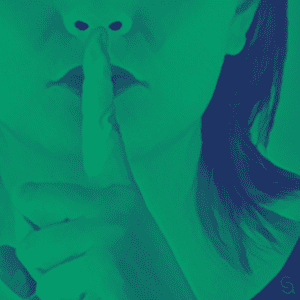 Even though author Tom Skinner is most famous for the message he delivered at Urbana in 1970, the deeper story of that night is about the group of Black college students who literally sat front and center while he delivered his oration. For them, Skinner was their on-stage advocate for Black evangelicals. He was a person who understood their hopes and experiences and could powerfully articulate them to a white evangelical audience.
Even though author Tom Skinner is most famous for the message he delivered at Urbana in 1970, the deeper story of that night is about the group of Black college students who literally sat front and center while he delivered his oration. For them, Skinner was their on-stage advocate for Black evangelicals. He was a person who understood their hopes and experiences and could powerfully articulate them to a white evangelical audience.
John Perkins, a Black evangelical and civil rights leader, said that Skinner provided a plausibility structure for young Black Christians who wondered if they had a place among their white coreligionists. He contended that before Tom Skinner came along and spoke the way he did, “Blacks didn’t see evangelicalism as a place [for them].”
Personally, I never describe myself using the word “evangelical,” as Skinner and other Black Christians did in the mid-twentieth century. The color line within evangelicalism in the United States has been a barrier to full inclusion for anyone who is not white. At best, I am “evangelical-adjacent.” Most of my Christian life has been spent “in but not of” white evangelical fellowships. I know from a firsthand perspective the difficulty of addressing racial justice in these communities and how so many Black evangelical-adjacent Christians search for others who can articulate, and possibly transcend, those hardships.
I can easily picture myself as one of those Black college students clustered in seats at the front of the auditorium as part of Skinner’s “amen corner.” I can even see parts of myself in him. I have stood on stages before white evangelical audiences and spoken about racism in their ranks. I have publicly spoken on the topic in articles, podcasts, and presentations, and I have felt the wounds of rejection as a result.
In 2011, I helped found a nonprofit organization called the Reformed African American Network (RAAN). At the time, I had just started seminary at Reformed Theological Seminary—a theologically and socially conservative school in Jackson, Mississippi. I had also started as an intern at an intentionally multiracial church in the city. It was part of the Presbyterian Church in America (PCA), which, I would discover, had a direct historical linkage to the Southern Presbyterians, who had broken off from their Northern counterparts in an effort to defend slavery. But, in my ignorance, I was determined to get ordained in the PCA. In spite of being in a hyperminority—if memory serves, I could count on one hand the number of Black Americans at my seminary, in a city where nearly 80 percent of residents were Black, and only 1 percent of pastors ordained to preach in the PCA were Black—I was on a mission.
My goal in the early 2010s was to create space and a place for Black Christians in white evangelical and Reformed circles. I wanted Black Christians like me to engage as equals at the white evangelical tables. At colleges and universities, seminaries, churches, websites, and conferences, I wanted Black Christians to be more than an afterthought in the white evangelical mind. I focused my ministry on racial reconciliation through interracial friendship, unity, and increasing the number of multiracial churches.
Over time, however, I came to see that white supremacy within white evangelical churches and institutions could not be vanquished by an interracial potluck or pulpit swap. In 2012, we started a website for RAAN and began posting articles. This was a milestone for our organization because we no longer had to rely on getting published in white evangelical outlets. We could articulate our realities on our own terms and on our own site. As soon as I started writing publicly about race and Christianity, however, I started to experience the opposition that so many other Black Christians have endured from their white coreligionists. I learned never to read the comments section—that’s where they first started calling me a communist, a Marxist, and a heretic. Those are just some of the terms white evangelicals, along with the Black people and other people of color who agree with them, use to label you as a threat to the church.
By 2016, I had withdrawn from the ordination process, due partially to the fact that I had learned that some white pastors had set their minds to sabotaging my ordination interviews with questions designed to prove I was a closet liberal whose stances on racism would mark the “theological drift” of the Presbyterian denomination. I had lost confidence in multiracial churches and the idea that people coming together in the same building for a couple of hours on Sunday morning would make a substantial difference in race relations Monday through Saturday. I had begun learning how to embrace the expansive Black Christian tradition as a source of healing and strength for the fight against racism. I was also just beginning to study history for inspiration and instruction from Black people of ages past.
In this season of my life, I encountered Tom Skinner and immediately gravitated toward him. As a Black Christian in white spaces, I thought that if I could learn more about Skinner’s life, study his words, and absorb his philosophy of ministry, then perhaps I could find a way to maneuver in white evangelical circles while also offering prophetic critique for the purpose of Black liberation.
Researching Skinner’s later ministry, however, I wondered whether he had changed tactics from the revolutionary rhetoric he delivered at Urbana in 1970 to a more conciliatory approach toward white evangelicals. Before his abrupt death in 1994 from leukemia at the age of fifty-two, Skinner had committed his name and voice to a new racial reconciliation project called Mission Mississippi.
Started in 1993, Mission Mississippi’s slogan was “changing Mississippi one relationship at a time.” These were fine-sounding words in theory, but when filtered through a white evangelical lens, in practice they became an excuse to avoid challenging racism in its systemic and institutional forms. “Real change does not come through laws and policies,” the logic goes, “it comes through personal friendships that soften the heart and lead to new actions and new attitudes.” Skinner himself seemed to agree with this approach to racial transformation. In a 1993 interview, he said, “What really is the problem is that we don’t know each other. What Mission Mississippi is about is creating an atmosphere where we can know each other and build trust. If that happens, violence will be reduced, mistrust will be reduced, economic prosperity can increase.” Skinner made no mention of the laws, policies, or practices that worked to continually marginalize Black people in a place where they constituted a larger percentage of the population than any other state in the country.
The evidence against the “one relationship at a time” method of racial reform is as copious as it is ominous. It simply doesn’t work. Strong interracial relationships by themselves do nothing to change the fact that Black people are incarcerated at disproportionately high rates, that the median white family has ten times the wealth of the median Black family, or that Black women die in maternity- related deaths at three times the rate of white women.
Skinner had to know this. He grew up in a working-class family in Harlem in the 1940s and 1950s. He lived through the civil rights and Black Power eras. He had faced the wrath of angry white evangelicals who turned on him as soon as he started identifying racism as more than merely an issue of personal piety.
What happens to Black Christians who attempt to cultivate relationships with white evangelicals while also pushing for racial equity? In his book Open Friendship in a Closed Society, which examines Mission Mississippi, historian Peter Slade explains, “The prophets of radical open friendship who cry in this wilderness are either marginalized or have their messages adulterated into an insipid gospel of cheap reconciliation.” In my own experience, Black Christians who remain in white evangelical spaces have three options. They either get pushed out, they burn out, or they sell out.
When rapper Lecrae, a Black Christian who amassed a large following of white evangelicals with his early albums, started speaking more publicly about racism, he was met with backlash on social media. People said he was playing the “race card,” and some vowed never to buy another album or purchase a ticket to his concerts. I have endured days of extreme exhaustion from trying to persuade, cajole, and convince white evangelicals that we need to press for racial justice and that those efforts are not a distraction from the faith but integral to it. This is not a new story. Some people close to Skinner suggested that the strain of working across racial lines for reconciliation may have contributed to his poor health and perhaps even his early death. Confronting racism in its systemic and institutional forms—especially in the church—is risky work.
To find strength for this journey of racial justice, I look to men like Tom Skinner. But the more I learn of his story, the more questions I have.
Did the Tom Skinner of the relationally focused Mission Mississippi maintain the same zeal for revolution as the Tom Skinner who boldly spoke of racism, revolution, and liberation in 1970? Did he remain a man who was marginalized for his refusal to compromise with white evangelical racism? Was he a person whose message was appropriated by people who wanted to feel good about themselves through interracial friendships but hardly took any action against systemic injustice?
Is Tom Skinner really the champion for Black evangelicals that he appeared to be that night at Urbana ’70?
 Jemar Tisby is the author of the New York Times bestselling book The Color of Compromise: The Truth about the Church’s Complicity in Racism (Zondervan, 2019), and also How to Fight Racism: Courageous Christianity and the Journey toward Racial Justice (Zondervan, 2021). His latest book is How to Fight Racism: Young Reader’s Edition (Zonderkidz, 2022). Jemar has been a cohost of the “Pass the Mic” podcast since its inception seven years ago. His writing has been featured in The Washington Post, The Atlantic, and the New York Times, among others. He is a frequent commentator on outlets such as NPR and CNN’s New Day program. He speaks nationwide on the topics of racial justice, US history, and Christianity. Jemar earned his PhD in history, and he studies race, religion, and social movements in the twentieth century. You can follow his work through his newsletter, Footnotes, and on social media at @JemarTisby.
Jemar Tisby is the author of the New York Times bestselling book The Color of Compromise: The Truth about the Church’s Complicity in Racism (Zondervan, 2019), and also How to Fight Racism: Courageous Christianity and the Journey toward Racial Justice (Zondervan, 2021). His latest book is How to Fight Racism: Young Reader’s Edition (Zonderkidz, 2022). Jemar has been a cohost of the “Pass the Mic” podcast since its inception seven years ago. His writing has been featured in The Washington Post, The Atlantic, and the New York Times, among others. He is a frequent commentator on outlets such as NPR and CNN’s New Day program. He speaks nationwide on the topics of racial justice, US history, and Christianity. Jemar earned his PhD in history, and he studies race, religion, and social movements in the twentieth century. You can follow his work through his newsletter, Footnotes, and on social media at @JemarTisby.


